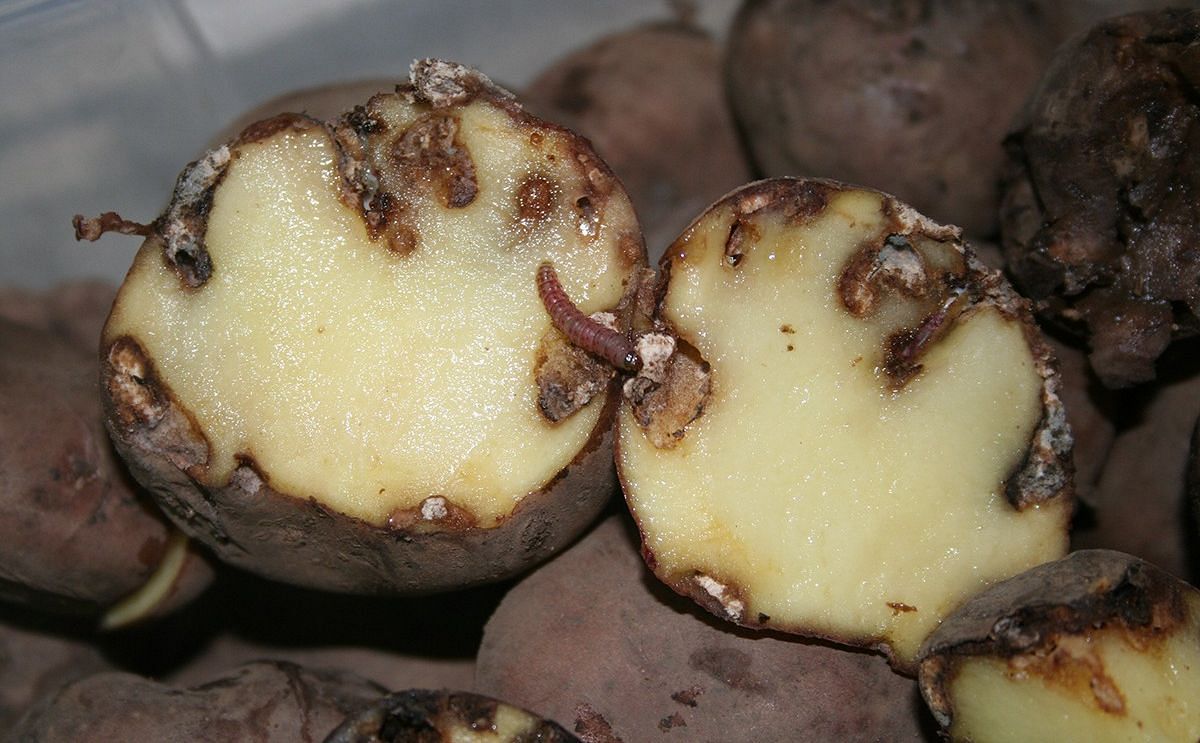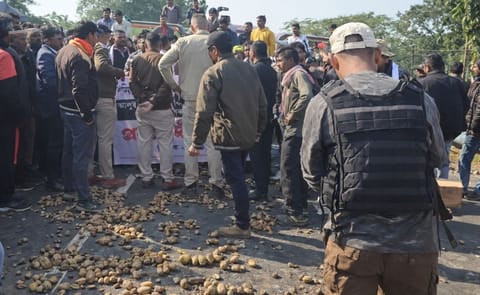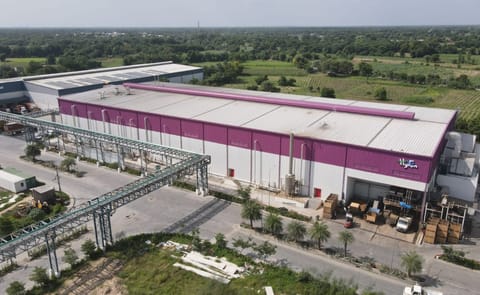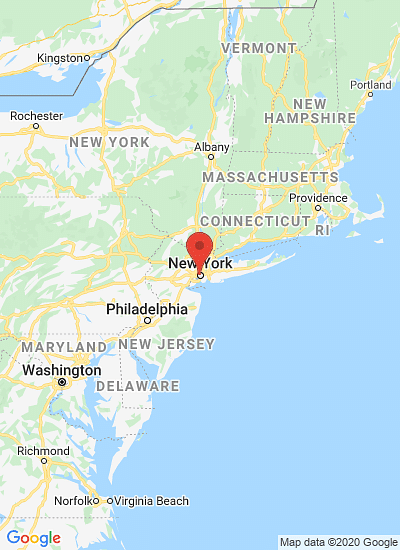Damage caused by the potato tuber moth (Courtesy: Katja Poveda).
Solapas principales
When pests graze certain potatoes, yields double

When some Colombian potato varieties are lightly grazed by a pest, the plants respond by growing larger tubers, at times doubling their yields.
Although many types of plants can repair pest damage while maintaining productivity, it’s rare to find species that actually overcompensate and increase productivity.
Cornell and the Universidad Nacional de Colombia researchers first discovered this effect in a commercial Colombian potato in 2010. Now, a new study by the research group published Dec. 27, 2017, in the journal Ecology investigates whether certain conditions might allow farmers to exploit this response to reduce insecticides and increase productivity.
Katja Poveda, assistant professor of entomology and the paper’s lead author:
Katja Poveda
They found higher compensation in areas that are mostly surrounded by agriculture and less natural habitat. This could be because agricultural areas are normally on good soils and
Katja Poveda
In the study, the researchers planted an overcompensating potato variety (Pastusa Suprema) on 15 farms across different altitudes and landscapes, with two plots for each farm. Insecticide was applied to one plot (to provide a control of undamaged tubers), while the other plot had none, on each farm. They measured yields for both and pest damage for the untreated plots, then compared the results.
The first step for farmers to take advantage of overcompensation in these potato varieties will be to develop a reliable way to monitor the pest, which is challenging because the larval stages of the pests, such as the Guatemalan tuber moth and the potato weevil, live in the soil. Pheromone traps or lures for females could be options, Poveda said.
Poveda and colleagues are also working with researchers at the Boyce Thompson Institute to identify the mechanism behind overcompensation.
Once that happens, they can investigate whether overcompensation can be induced without the pest and if the effect can be translated or bred into U.S. varieties.
Poveda is currently testing whether overcompensation exists in any potato varieties in the United States.
Maria Diaz and Augusto Ramirez, both researchers at the Universidad Nacional de Colombia in Bogota, are co-authors on the paper.
The study was funded by the Atkinson Center for a Sustainable Future and the German Science Foundation.
Although many types of plants can repair pest damage while maintaining productivity, it’s rare to find species that actually overcompensate and increase productivity.
Cornell and the Universidad Nacional de Colombia researchers first discovered this effect in a commercial Colombian potato in 2010. Now, a new study by the research group published Dec. 27, 2017, in the journal Ecology investigates whether certain conditions might allow farmers to exploit this response to reduce insecticides and increase productivity.
Katja Poveda, assistant professor of entomology and the paper’s lead author:
“The option of increasing productivity based on the compensatory plant response could open the door to a decrease in insecticide use.”The sweet spot for when herbivory by pests leads to the highest yields in these varieties occurs when about 10 percent of tubers are eaten, but herbivory can go up to 20 percent without any cost to productivity.
“It could be a sustainable way to produce food based on a plant’s natural response to herbivory.”
Katja Poveda
“It would be a benefit to not invest in insecticides up until this point.”But once pest damage exceeds 20 and 30 percent, insecticides become necessary, she added. The researchers also looked at how landscape composition and altitude might affect the overcompensating response.
They found higher compensation in areas that are mostly surrounded by agriculture and less natural habitat. This could be because agricultural areas are normally on good soils and
Katja Poveda
“It is known that compensatory plant responses are stronger under better soil conditions.”They also found that altitude had a limited effect, where the highest overcompensation effects occurred right in the middle of the study range, in neither low nor high altitude, between 2,700 and 3,000 meters. More research is needed to explain this result, Poveda said.
In the study, the researchers planted an overcompensating potato variety (Pastusa Suprema) on 15 farms across different altitudes and landscapes, with two plots for each farm. Insecticide was applied to one plot (to provide a control of undamaged tubers), while the other plot had none, on each farm. They measured yields for both and pest damage for the untreated plots, then compared the results.
The first step for farmers to take advantage of overcompensation in these potato varieties will be to develop a reliable way to monitor the pest, which is challenging because the larval stages of the pests, such as the Guatemalan tuber moth and the potato weevil, live in the soil. Pheromone traps or lures for females could be options, Poveda said.
Poveda and colleagues are also working with researchers at the Boyce Thompson Institute to identify the mechanism behind overcompensation.
Once that happens, they can investigate whether overcompensation can be induced without the pest and if the effect can be translated or bred into U.S. varieties.
Poveda is currently testing whether overcompensation exists in any potato varieties in the United States.
Maria Diaz and Augusto Ramirez, both researchers at the Universidad Nacional de Colombia in Bogota, are co-authors on the paper.
The study was funded by the Atkinson Center for a Sustainable Future and the German Science Foundation.
¿Te gustaría recibir noticias como esta por correo electrónico? ¡Únete y suscríbete!
Get the latest potato industry news straight to your WhatsApp. Join the PotatoPro WhatsApp Community!
Empresa Destacada
Contenido Patrocinado
Contenido Patrocinado
Contenido Patrocinado
Contenido Patrocinado










